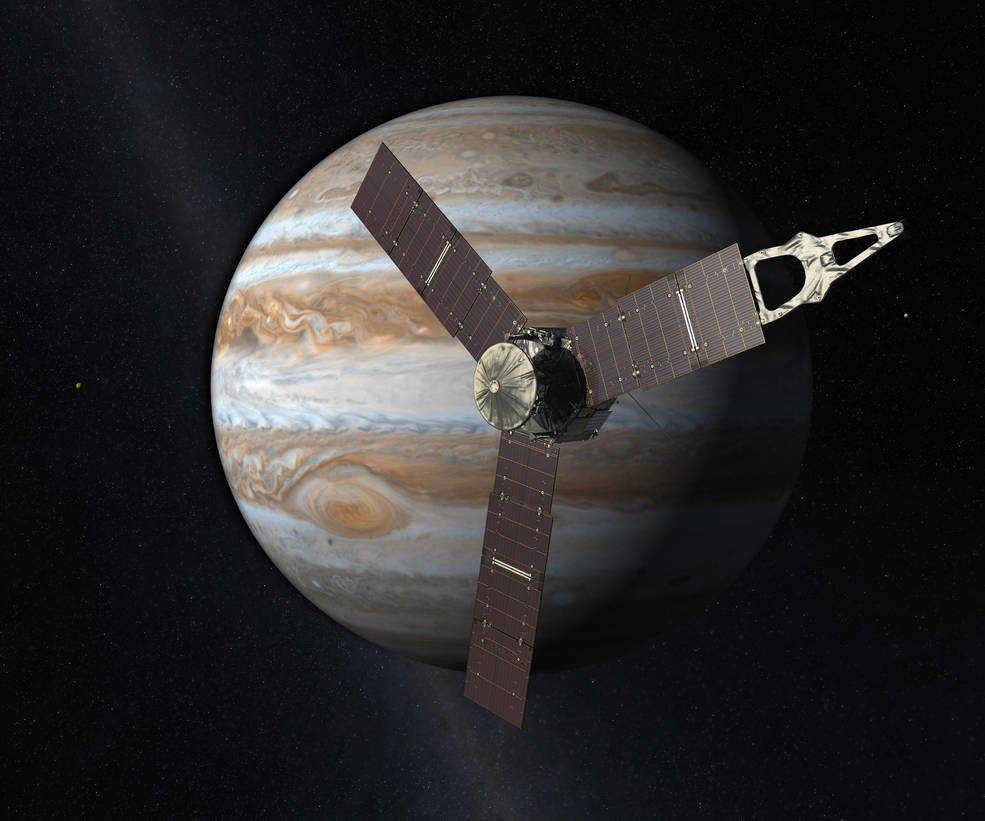Launched from Earth in 2011, NASA’s Juno spacecraft will arrive at Jupiter this year to study the giant planet from an elliptical, polar orbit. Its mission to the planet has just broken the record to become humanity’s most distant solar-powered emissary.
The milestone occurred at 11 a.m. PST (2 p.m. EST) on January 13, when Juno was about 493 million miles from the sun. Previously the record-holder was the European Space Agency’s Rosetta spacecraft, whose orbit peaked out at the 492-million-mile mark in October 2012 during its approach to comet 67P/Churyumov-Gerasimenko.

Juno weighs in at four tons and carries three 30-foot-long solar arrays equipped with 18,698 solar cells. Image source: NASA.
“Juno is all about pushing the edge of technology to help us learn about our origins,” said Scott Bolton, Juno principal investigator at the Southwest Research Institute in San Antonio. “We use every known technique to see through Jupiter's clouds and reveal the secrets Jupiter holds of our solar system’s early history. It just seems right that the sun is helping us learn about the origin of Jupiter and the other planets that orbit it.”
Because Juno is the first solar-powered spacecraft designed to operate at such a great distance from the sun, the surface area of its solar panels are required to generate adequate power. The four-ton spacecraft carries three 30-foot-long solar arrays equipped with 18,698 individual solar cells. At Earth-distance from the sun, the cells have potential to generate 14 kilowatts of electricity. Transporting those same solar cells to the fifth planet from the sun is a powerfully different story.
“Jupiter is five times farther from the sun than Earth, and the sunlight that reaches that far out packs 25 times less punch,” said Rick Nybakken, Juno's project manager from NASA's Jet Propulsion Laboratory in Pasadena, CA. “While our massive solar arrays will be generating only 500 watts when we are at Jupiter, Juno is very efficiently designed, and it will be more than enough to get the job done.”
Scheduled to arrive at Jupiter on July 4 of this year, Juno will orbit the Jovian world 33 times, coming within 3,100 miles above the planet’s cloud tops every 14 days. During its flybys, Juno will probe beneath the obscuring cloud cover of Jupiter to study its aurorae to learn more about the giant planet’s origins, structure, magnetosphere, and atmosphere.
Source: NASA
Advertisement
Learn more about Electronic Products Magazine





